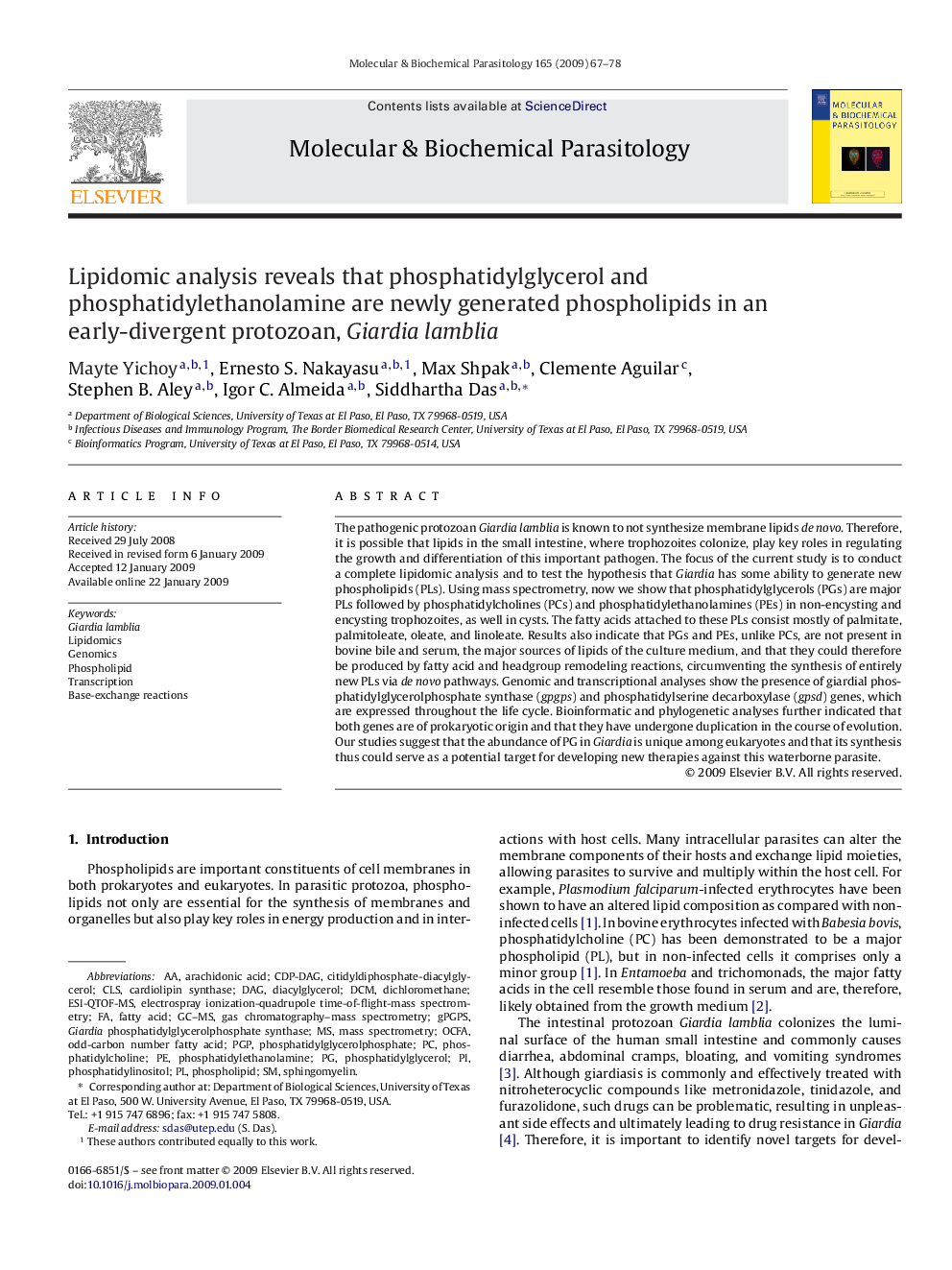| کد مقاله | کد نشریه | سال انتشار | مقاله انگلیسی | نسخه تمام متن |
|---|---|---|---|---|
| 2830034 | 1163346 | 2009 | 12 صفحه PDF | دانلود رایگان |

The pathogenic protozoan Giardia lamblia is known to not synthesize membrane lipids de novo. Therefore, it is possible that lipids in the small intestine, where trophozoites colonize, play key roles in regulating the growth and differentiation of this important pathogen. The focus of the current study is to conduct a complete lipidomic analysis and to test the hypothesis that Giardia has some ability to generate new phospholipids (PLs). Using mass spectrometry, now we show that phosphatidylglycerols (PGs) are major PLs followed by phosphatidylcholines (PCs) and phosphatidylethanolamines (PEs) in non-encysting and encysting trophozoites, as well in cysts. The fatty acids attached to these PLs consist mostly of palmitate, palmitoleate, oleate, and linoleate. Results also indicate that PGs and PEs, unlike PCs, are not present in bovine bile and serum, the major sources of lipids of the culture medium, and that they could therefore be produced by fatty acid and headgroup remodeling reactions, circumventing the synthesis of entirely new PLs via de novo pathways. Genomic and transcriptional analyses show the presence of giardial phosphatidylglycerolphosphate synthase (gpgps) and phosphatidylserine decarboxylase (gpsd) genes, which are expressed throughout the life cycle. Bioinformatic and phylogenetic analyses further indicated that both genes are of prokaryotic origin and that they have undergone duplication in the course of evolution. Our studies suggest that the abundance of PG in Giardia is unique among eukaryotes and that its synthesis thus could serve as a potential target for developing new therapies against this waterborne parasite.
Journal: Molecular and Biochemical Parasitology - Volume 165, Issue 1, May 2009, Pages 67–78